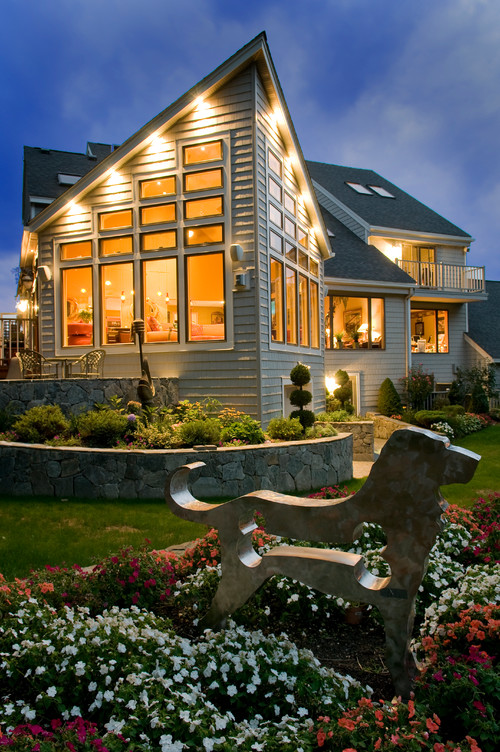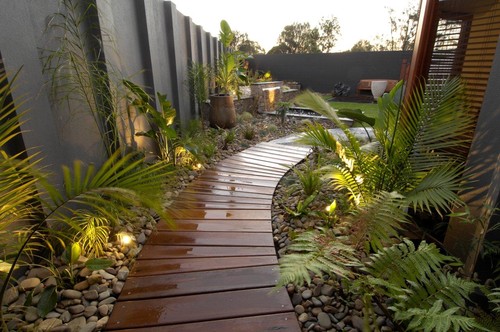×
Email
HOW CAN WE HELP?
6a - 7p Monday - Friday
6a - 2p Saturday
Mountain Time
PHONE
1-877-738-7237
FAX
1-866-777-1434
MAIL
Pets Best
2323 S Vista Ave. Ste. 100
Boise, ID 83705
My Question
First Name
Last Name
Policy (optional)
Phone
Best Day
Best Time
Click here to text customer care
- Pet Insurance
- Blog
- 6 Ways to Help Your Dog and Landscape Play Nicely Together
6 Ways to Help Your Dog and Landscape Play Nicely Together
May 17, 2023, 11:34
Title :
6 Ways to Help Your Dog and Landscape Play Nicely Together
Image url :
https://st.hzcdn.com/simgs/d421afe8011cfc5b_8-6967/contemporary-exterior.jpg
Post created date :
May 12, 2017, 07:39
Post last modified :
Jun 20, 2022, 10:11
Dogs and outdoor spaces go together naturally. But with their penchant for digging holes, carving runway paths worthy of an international airport and eating plants, some dogs can wreak havoc on landscape design. Knowing what some of the most common problems are and how to overcome them will help keep the peace between you and your dog, and leave you both with a beautiful yard to enjoy.
Here's what to keep in mind.
1. Know Your Dog
If you've ever struggled with keeping your landscape together when your dog seems to have other ideas, consider replacing your pet with this dog statue. Just kidding! Of course there are ways to live in harmony.
Every dog is unique, but different breeds tend to have different traits. Terriers will dig, beagles will try to escape and golden retrievers will dive into water. What's more, every dog has its own special personality and character traits, too.
Knowing how your dog approaches life -- will he or she be eagerly exploring the yard and checking out what is new, or simply settling back and watching things go by? -- will help you be aware of issues that may come up.
2. Put In Paths
Dogs feel it's their job to patrol the perimeters of the yard. Rather than fight this instinct, include a running space at or near the edge of your yard and add a clearly designed route to get to it. Make the route straight or softly curving; your dog will probably cut the corner rather than make a 90-degree turn.
If your dog has already created a path through your yard, you can try to retrain him or her by creating new paths and blocking the old route. In the end, though, it may be easier to give in and go with what's established. Use paw-friendly materials to turn it from a dirt path to something that's inviting to everyone.
Concrete, brick, flagstone, smooth river stones and smooth gravel are great for dog paws. Using fine bark as a mulch works too, but not cocoa mulch -- ever. For smooth-coated dogs, thicker mulch is good; for dogs with longish fur, you may want to avoid even small mulch, because it will attach to your dog and end up all over your house.
Related: Hire a Landscape Design Professional to Draw Up Plans for a Pet-Friendly Yard
3. Set Up Barriers
It would be nice if dogs realized which plants are delicate and which areas are off limits. But that's not going to happen. Instead, you'll need to create physical reminders that will make it unpleasant, but not dangerous, for dogs to reach certain spots.
Related: The Surprising Reason Why You Shouldn't Plant Butterfly Bush
You can do this with hardscaping, such as walls, fences or even pieces of wood, but for a softer look, think about using plants, such as rosebushes, tall ornamental grasses, hedges or thick shrubs. Just be sure they aren't toxic or won't physically harm your dog.
By Marianne Lipanovich - See more Home Design Photos
4. Protect Your Crops
Brinkley (shown here) is almost 2, and he absolutely loves peaches. He's also very fond of ripe tomatoes, strawberries, lettuce and spinach. If he were a toddler, I'd be thrilled. Since he's a cocker spaniel and his chosen feasts are the vegetables and fruits in my garden, I'm not as happy. I'd actually like to harvest the crop for myself.
If your dog also loves the bounty of your garden, you have options. The classic set-aside vegetable garden, complete with a fence, will always work, but it may not be necessary. A low fence around a vegetable garden can be enough to keep even larger dogs out. They may be able to jump over it, but it might not occur to them.
Bird netting can save lettuce, spinach and strawberries, and cages around taller plants can keep dogs at bay. Hedges, meanwhile, can create a border, and tomato cages can protect trees and shrubs.
Pet stores have bitter apple and orange sprays to use on plants. The taste discourages nibbling. They may not work completely, but they can help mitigate damage.
Your barriers might not even need to be permanent. Newly planted seedlings or annuals and perennials can be highly tempting -- they're new and fun to pull out of the ground. Keeping these plants off limits just until the novelty wears off and the plants have had a chance to establish themselves might be enough.
5. Deal With Digging
Dogs dig, and some dig more than others. Consider yourself lucky if you don't have to contend with some digging.
Before you condemn all digging out of hand, remember that dogs often dig for a good reason -- to create a cool place in which to lie or to bury a bone. They may also dig to escape, to alleviate boredom or simply because that's what their breed has been bred to do.
If a dog is trying to escape, add chicken wire or boards at or below the soil line. If your pet is digging in other parts of the garden, try laying down chicken wire or installing small, round wooden stakes upright just below or at soil level to make digging uninviting.
A dense planting along a fence line can also be a deterrent. Keep the bed relatively narrow and check periodically to be sure your dog hasn't found a way through the space.
You can also create a designated digging spot with sand or gravel. Think of it as the equivalent of a kids' sandbox. Bury some treats or toys to encourage your dog to dig there and offer praise for using that spot. And just like with a sandbox, you'll probably need a cover to keep cats out.
6. Keep Things Green
While a lawn is one of the most comfortable surfaces for dogs and people to wander on, a common problem when you have a dog is brown spots, due to the nitrogen in dog urine. Keeping the lawn well watered and the blades somewhat long will help dilute the urine and hide the browning. There are also products available to help prevent or lessen the burn.
Even better is to designate a bathroom area for your pet. It takes some work, but is possible to train dogs to go in just one or two places in your yard. The ingenious locale shown here is hidden behind a fence. Another option for a bathroom spot is a gravel patch that can easily be hosed down; dogs often prefer gravel to grass anyway.
This article is part of a collaboration between Pets Best pet health insurance and Houzz. We’ve teamed up to provide you this series of articles focused on pets and homes. Learn more about pet insurance at petsbest.com.
Tags :
Categories :
- Dog Articles
Related author bios :
Dr. Jack L. Stephens







